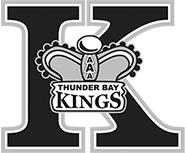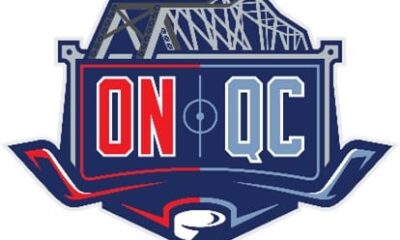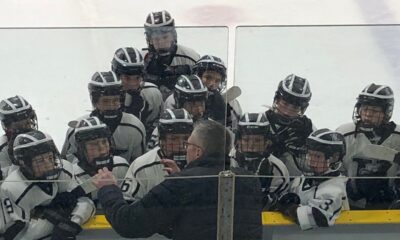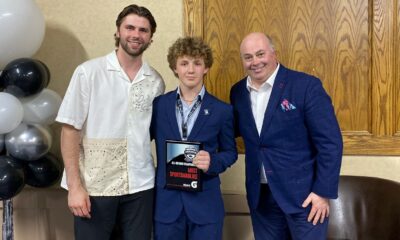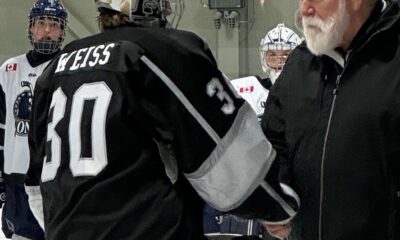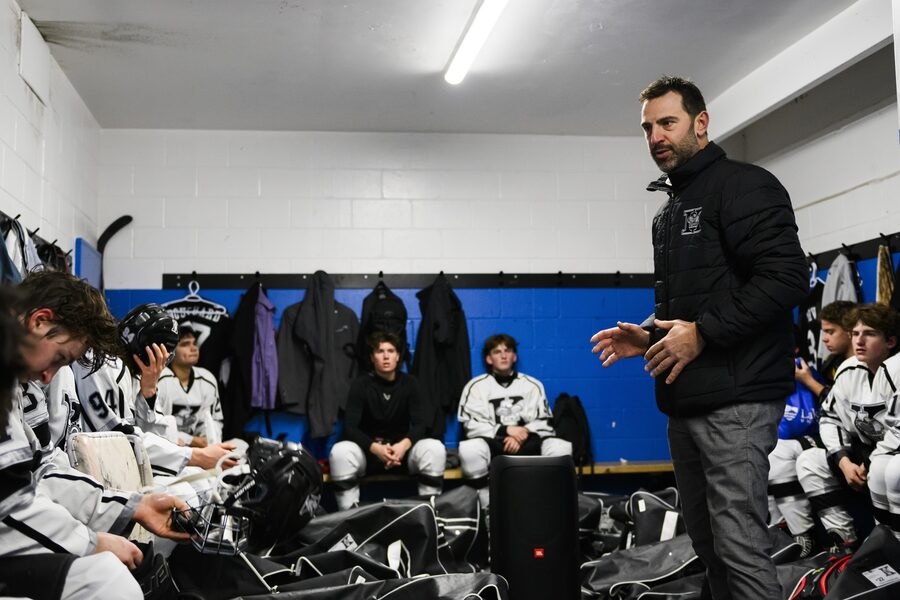
Photo credit: Christopher Katsarov/The Globe and Mail
By Marty Klinkenberg
The Globe & Mail
TORONTO — Do you think it is hard for hockey parents to get their kids to the rink for an early morning practice? Think again.
Consider the extraordinary lengths and expense it takes to get 80 youths from Northern Ontario to compete against some of the best players in the world.
Every weekend preteens, teenagers, coaches and parents fly more than 900 kilometres to Toronto from Thunder Bay to play in the Greater Toronto Hockey League. They ride on charter buses, stay in a hotel, play four games in 40 hours within the world’s largest and best minor-hockey association and then fly home.
It is a trip that is easily lengthened by delays. Last week, the under-18 Kings flew out of Thunder Bay early on Thursday, had a seven-hour layover in Ottawa, and did not arrive until late the same night. They then had an early practice on Friday and played on Friday night. They returned exhausted to Thunder Bay on Sunday evening.
Do you complain your child’s hockey fees are too high?
The expense to play on one of Thunder Bay’s four Triple-A teams competing in the GTHL is $18,000 to $20,000 a player – about the cost of a used car. That fee covers a season of 36 games, travel and accommodations. Some families have remortgaged homes to make it happen. Some have two sons playing, so it is twice as much. About as much as a new car.
“You have to have a money tree in the backyard,” says Chris Hynnes, an assistant coach for the under-18 Kings.
The under-18, under-16, under-15 and under-13 teams from Thunder Bay are the only ones from outside the Toronto area that participate in the league that produced Connor McDavid, P.K. Subban, John Tavares, Mitch Marner, Alex Pietrangelo, Ryan O’Reilly, Tyler Seguin, Quinn and Jack Hughes and countless other NHL stars.
Before the northerners could play in the league they had to get special permission from Hockey Canada to play outside of their own jurisdiction.
This is the third year that the Triple-A teams – all called the Kings – have competed in the GTHL. Most recently they had played in a loop with a team in Minnesota but were unable to continue after travel restrictions related to COVID-19 were put in place.
As the crow flies, Thunder Bay is 930 kilometres from Toronto. By car it is more than 1,400. From Thunder Bay, Minneapolis is a little more than a third of that distance.
In their first two years, all four teams flew to and from Toronto on an Airbus chartered from Air Canada Jetz, the corporate partner that is also employed by the Maple Leafs and other Canadian NHL clubs. This year the Kings are flying commercially on Porter’s smaller planes and thus all can’t travel together at the same time.
Why do they come to Toronto? Because the GTHL is the cream of the crop for minor hockey and for Thunder Bay teams to improve, they have to play against better competition than can be found up north. This year the GTHL includes 511 teams in 15 age classes and 40,000 players.
Among them there are 96 Triple-A teams. In Thunder Bay, the highest level available is Double A. And for the older boys, it is an opportunity to be seen by scouts. That is especially important for the under-16s, who will be eligible for the 2024 OHL draft.
Players come from not only Thunder Bay but from all over northwestern Ontario. Some live with relatives in Thunder Bay, others billet with a local family as though they were already in the OHL. While coaches on other teams in the GTHL are paid – and in some cases quite well – all the Kings’ coaches are volunteers.
Heading into this weekend the four teams have a combined record of 4-32-4.
“It’s not about winning, it’s about them growing as kids and becoming better people,” says Craig Smith, whose son Mitch plays on the under-16 squad. “They’ll look back 10 or 15 years from now and not think about all the losses but remember the excitement of flying to Toronto for games.
“They are living like pros. Every kid loves that.”
Last weekend the under-16 Kings lost four times but in stretches played quite well. They are at a disadvantage because they have a much smaller population base from which to draw players than their opponents.
“I feel for the boys but overall it has been an amazing experience for them,” says their head coach, Mike Simeoni. “They get to play against the best and quickly learn how they stack up. There is a learning curve to match the level of competition for everybody.”
On Nov. 11, the under-13 and under-16 boys played at the Chesswood Arena in Toronto. Amid light flurries they lugged hockey bags into the rink, which is decorated with pictures of hundreds of players who went from the GTHL to the NHL. The number is more than 300.
Coaches carried whiteboards upon which they would draw up plays. Music blared from the dressing rooms. Parents wrapped themselves in blankets to watch the action in a bone-chilling rink.
The under-16 Kings had a tough matchup against the Toronto Jr. Canadiens. It was 2-0 after one period, 4-0 after two and ended up 8-0.
“The attraction in coming here is for our boys to have the ability to play in the best league in the world,” says John Hockenhull, whose son Kade is the team captain. “It is really an honour.”
Hockenhull owns a restaurant in Thunder Bay called the Burger Barn, which advertises having the best buns in town.
“Parents go into the hole and make a lot of sacrifices for their sons,” he says. “A lot of these kids had never been on a plane before. They have learned a lot in these last couple of years, and not just about hockey. It’s an experience they’ll never forget.”
The under-16 Kings have their very own pair of Hanson brothers in Landen and Layton. They are from Fort Frances, Ont., four hours west of Thunder Bay and across the border from International Falls, Minn. They live with their uncle in Thunder Bay and will be eligible for the OHL draft next year.
“You want your kids to have the best opportunities in life,” says their father, Chad. He and his wife watch their games online. “We’re really happy with how well things have gone for the boys. They are building character, making lots of friends and learning life skills.”
Chad Hanson says their grandparents have helped cover the cost, and that they have received a small bit of support from local sponsors.
“Unfortunately, the cost is what the cost is,” Simeoni says. He is the manager of an RBC branch in Thunder Bay and his brother, Matt, helps coach the under-16 team. “It is the reality of living up north and playing in the GTHL.
“The organization has done a great job. Everybody has given these kids the best possibility to succeed. I can’t tell how many times parents and coaches from other teams stop us in the rink and ask how we do it. There is general curiosity.”
Between games on Saturday, the team took a charter bus back to its hotel, had food delivered, rested for an hour and then got back on the bus and headed to another rink. That night they lost to the Toronto Young Nationals.
It could wear on you but it doesn’t. The boys think about all those players who emerged from the league and reached the NHL.
The Thunder Bay Kings have a proud hockey history. Eric, Jordan and Marc Staal all were developed through their program. So was Patrick Sharp. And each year an increasing number of players get drafted by major-junior clubs.
“This is definitely the highest level of hockey they could play,” Smith says. He lives in Thunder Bay and fishes for lobster and scallops at different times of the year off Nova Scotia in the Northumberland Strait. Last year he also had a son on the under-18 Kings. “I told them they probably won’t play in the NHL but maybe will get a chance to play against somebody who will.”
